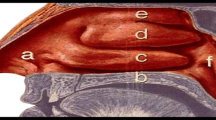Abstract
Allergic reactions to sulfonamide-based drugs are quite common; hence, medications containing sulfonamides are prescribed carefully. Metal ion complexation may block the nitrogen binding site of sulfonamide by complexation and reduce such responses. In this study, trace concentrations of Zn were found to bind with sulfanilamide at pH ∼ 1. The complexation was studied in water as well as in vesicular medium of polyethylene glycol (PEG) and a block copolymer, PPG-PEG-PPG. The binding constants (k) of Zn-sulfanilamide complex were determined in water, PEG, and PPG-PEG-PPG block copolymer media. The values suggest that complexation occurs best in water followed by PPG-PEG-PPG, PEG #4000, and PEG #12000. Though the binding constants are high in water and block copolymer media, the complex is not very stable as the absorbance value for the complex was found to decline with time. The same complex when prepared in polymer matrix shows higher stability. The results prompted us to explore the extraction possibilities of the Zn-sulfanilamide complex by using aqueous biphasic extraction systems comprising the polymers against sodium sulfate solution. The complex was analyzed for its allergenic response in different media by competitive enzyme-linked immunosorbent assay (ELISA) technique. The allergic response of the compounds in the respective media is the resultant of the binding constant and the stability of the complex in that particular medium.











Similar content being viewed by others
References
Zhang CL, Wang FA, Wang Y. Solubilities of sulfadiazine, sulfamethazine, sulfadimethoxine, sulfamethoxydiazine, sulfamonomethoxine, sulfamethoxazole, and sulfachloropyrazine in water from (298.15 to 333.15) K. J Chem Eng Data. 2007;52:1563–6.
Martinez F, Gomez A. Thermodynamic study of the solubility of some sulfonamides in cyclohexane. J Solution Chem. 2001;30:909–22.
Delgado JN, Remers WA. Wilson and Gisvold text book of organic medicinal and pharmaceutical chemistry. 9th ed. New York: Lippincott; 1991.
Chaudhary PR, Sen DJ. Complexation: effect of metal on microbiological activity of sulfanilamide derivatives. Am J Adv Drug Deliv. 2013;1:149–56.
Blasco F, Perelló L, Latorre J, Borrás JS, Garciá-Granda. Cobalt(II), nickel(II), and copper(II) complexes of sulfanilamide derivatives: synthesis, spectroscopic studies, and antibacterial activity. Crystal structure of [Co(sulfacetamide)2(NCS)2]. J Inorg Biochem. 1996;61:143–54.
Ferrer S, Borrás J, Garcia-España E. Complex formation equilibria between the acetazolamide ((5-acetamido-1,3,4-thiadiazole)-2-sulphonamide), a potent inhibitor of carbonicanhydrase, and Zn(II), Co(II), Ni(II) and Cu(II) in aqueous and ethanol-aqueous solutions. J Inorg Biochem. 1990;39:297–306.
Supuran CT, Mincione F, Scozzafava A, Briganti F, Mincinone GM, Ilies MA. Carbonic anhydrase inhibitors—part 52. Metal complexes of heterocyclic sulfonamides: a new class of strong topical intraocular pressure-lowering agents in rabbits. Eur J Med Chem. 1998;33:247–334.
Supuran CT, Scozzafava A. Novel aromatic heterocyclic sulfonamides and their metal-complexes as inhibitors of carbonic-anhydrase isozyme-I, isozyme-II and isozyme-IV. JEnzyme Inhib. 1997;13:37–51.
Jitianu A, Ilies MA, Scozzafava AC, Supuran T. Complexes with biologically active ligands-part 8. Synthesis and carbonic anhydrase inhibitory activity of 5-benzoyl amido and 5,3-(nitro benzoyl amido) 1,3, −thiadiazole 2-sulphonamide and their metal complexes. Main Group Met Chem. 1997;20:151–6.
Scozzafava A, Menabuoni L, Mincione F, Briganti F, Mincinone G, Supuran CT. J Med Chem. 1999;42:2641–50.
Casanova J, Alzuet G, Ferrer S, Borrás J, García-Granda S, Perez-Carreño E. Carbonic anhydrase inhibitors. Synthesis of water-soluble, topically effective, intraocular pressure-lowering aromatic/heterocyclic sulfonamides containing cationic or anionic moieties: is the tail more important than the ring? J Inorg Biochem. 1993;51:689–761.
Casanova J, Alzuet G, Borrás J, David L, Gatteschi D. Metal complexes of sulfanilamide derivatives. Spectroscopic characterization of the dichloro disulfathiazole methanol copper(II) complex. Inorg Chim Acta. 1993;211:183–6.
García-Raso A, Fiol JJ, Martorell G, López-Zafra A, Quirós M. Metallation of 2-sulfanilamidopyrimidine (sulfadiazine). X-ray diffraction structure and solution behaviour of bis(sulfadiazinato) mercury(II) bis(dimethylsulfoxide). Polyhedron. 1997;16:613–21.
Kucera CM, Greenberger PA. Adverse drug reactions: treatment and prevention. Hosp Med. 1996;32:11–24.
Bond CA. Skin disorders I. Applied therapeutics: the clinical use of drugs. Koda Kimble MA, Young L (eds). Vancouver, Applied Therapeutics, 5th Ed, p 64–18, 1991.
Vassileva S. Drug-induced pemphigoid: bullous and cicatricial. Clin Dermatol. 1998;16:379–87.
Dunca RN, Vicent MJ. Polymer therapeutics-prospects for 21st century: the end of the beginning. Adv Drug Deliv Rev. 2013;65:60–70.
Torchilin VP. Targeted polymeric micelles for delivery of poorly soluble drugs. Cell Mol Life Sci. 2004;61:2549–59.
Kopeek J, Kopekova P. HPMA copolymers: origins, early developments, present, and future. Adv Drug Deliv Rev. 2010;62:122–49.
Xu Y, de Souza MA, Ribeiro-Pontes MZ, Vitolo M, Pessoa-Jr A. Liquid-liquid extraction of pharmaceuticals by aqueous two-phase Systems. Br J Pharm Sci. 2001;37:2015–22.
Wei DZ, Zhu JH, Cao XJ. Enzymatic synthesis of cephalexin in aqueous two-phase systems. Biochem Eng J. 2002;11:95–9.
Ghatak SK, Dey D, Sen S, Sen K. Aromatic amino acids in high selectivity bismuth (III) recognition. Analyst. 2013;138:2308–14.
Pearson RG. Hard and soft acids and bases. J Am Chem Soc. 1963;85:3533–9.
Paik SP, Ghatak SK, Dey D, Sen K. Polyethylene glycol vesicles: self assembled site for luminescence generation. Anal Chem. 2012;84:7555–61.
Acknowledgments
We gratefully acknowledge the University Grants Commission (UGC, Sanction No. 41-248/2012 (SR)) for funding. One of the authors, S. P. P., acknowledges the University Grants Commission (N. PSW-47/12-13, dt 05.02.2013, S No. 213956) for funding. P. S. expresses sincere thanks to the UGC, India [Memo No. UGC/1228C/Major Research (SC) 2012] for providing the necessary fellowship.
Conflict of interest
There is no conflict of interest regarding the article. No animal studies were performed.
Author information
Authors and Affiliations
Corresponding author
Rights and permissions
About this article
Cite this article
Paik, S.P., Samaddar, P., Sen, S. et al. Self-assembled polymer vesicles in deciding action of Zn-sulfanilamide allergenicity. Drug Deliv. and Transl. Res. 4, 409–415 (2014). https://doi.org/10.1007/s13346-014-0203-1
Published:
Issue Date:
DOI: https://doi.org/10.1007/s13346-014-0203-1




